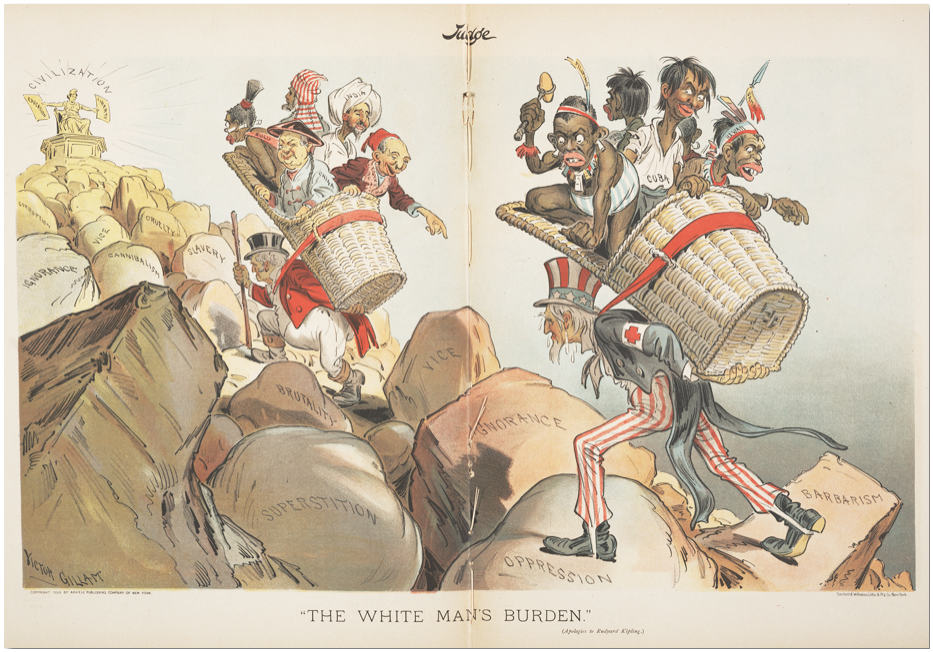28 Pernicious Background Theories
England in the 19th century was proud of its scientific attitude and achievements. Steam engines, calculating machines, automated factories, and advances in medicine gave the Victorians much to brag about. Theirs was an age of dependable, fruitful, scientific knowledge. They knew, for example, that women are, by nature, weaker than men in mind and spirit and are prone to chemical and psychological imbalances. When excited by too much activity or difficult thought, women typically become hysterical, which is a psychological and physiological condition brought on by the sensitive nature of their reproductive organs. The only treatment is decreased activity, less exposure to new ideas, and doses of opium as prescribed by more rational men. Similarly, it was clear to the Victorians that evolution had endowed the English with greater skills and grit which had led to an empire on which the sun would never set as it had spread around the globe. Other races clearly had not evolved to an equal degree, and it was the obligation of the white Europeans and Americans to help lead the lesser races to further degrees of civilization—for their own good, of course.

The Victorians used these “scientific theories” regarding sex, race, biology, psychology, and evolution as justification for a wide array of oppressive practices. But only in a few cases did knowledgeable people knowingly use these theories as some sort of “cover” for justifying racism and sexism. Rather, in most cases, knowledgeable people really believed they were seeing the world through clear lenses of science. They thought they were seeing women and people of color as they really were, or as nature had evolved them to be. It was perhaps regrettable (they might say) that nature was so unfair, giving so many benefits to some segments of humanity while leading other segments so backward and incapable, but that was why it was the duty of the superior humans to help along the inferior humans. As 19th-century scientists studied the physiologies, psychologies, and social structures of women and people of color, they “saw” what their background theories told them to expect to see: weaker, inferior creatures who could not help being who they were.
This is a clear case of observations being shaped and skewed by background theories that were pernicious and horrible. It is worth taking a moment to imagine what it would be like to be the target of these practices and theories. It would not only be the experience of sexism and racism, which is bad enough. The racism and sexism would be built into the culture: in the schools, in the medical books, in the training of all professionals, in popular lectures and newspaper articles, all promoted in just the way any scientific theory of atomic elements or electrical power would be promoted. Any woman or a person of color who believed themselves capable of doing what white men could do would be denying scientific fact, being irrational, and refusing to believe what observations plainly show. Their rebellious attitude would be seen as a problem that needed fixing, either through drugs or through confinement in a prison-like asylum which would restore the deluded person back to “health.” And there would be no court of higher appeal to hear this person’s case as the entire society was equally “enlightened” by the science of the day. Everything in society would be telling a woman or person of color that they were crazy or stupid not to see themselves as inferior human beings.
We should all be grateful that we know better now (even while we also recognize that the legacies of these prejudiced views continue to shape practices and institutions). But if we stop at that point of gratitude, then we have not learned the full lesson. The full lesson is that the results of science always can be shaped and skewed by the prejudices, biases, superstitions, and inequalities of society. Or is it more accurate to say that the results of science always will be shaped and skewed by societal prejudice? For the only way in which science can be saved from these prejudices is if active steps are taken to confront and challenge those prejudices in the society at large. An individual scientist or group of scientists cannot merely resolve to try hard not to be prejudiced. The Victorian scientists, after all, were trying very hard to be impartial and fair, and we can see where that led them. Rather, the societal prejudice as a whole must be challenged in order for the science that reflects that society not to be prejudiced.
Media Attributions
- The White Man’s Burden Judge 1899 © Victor Gillam is licensed under a Public Domain license

